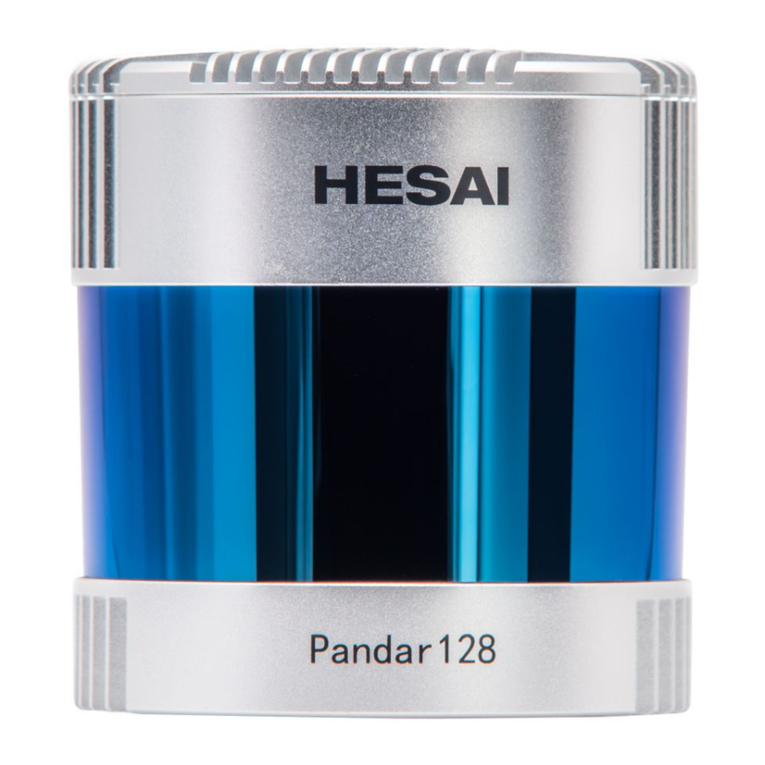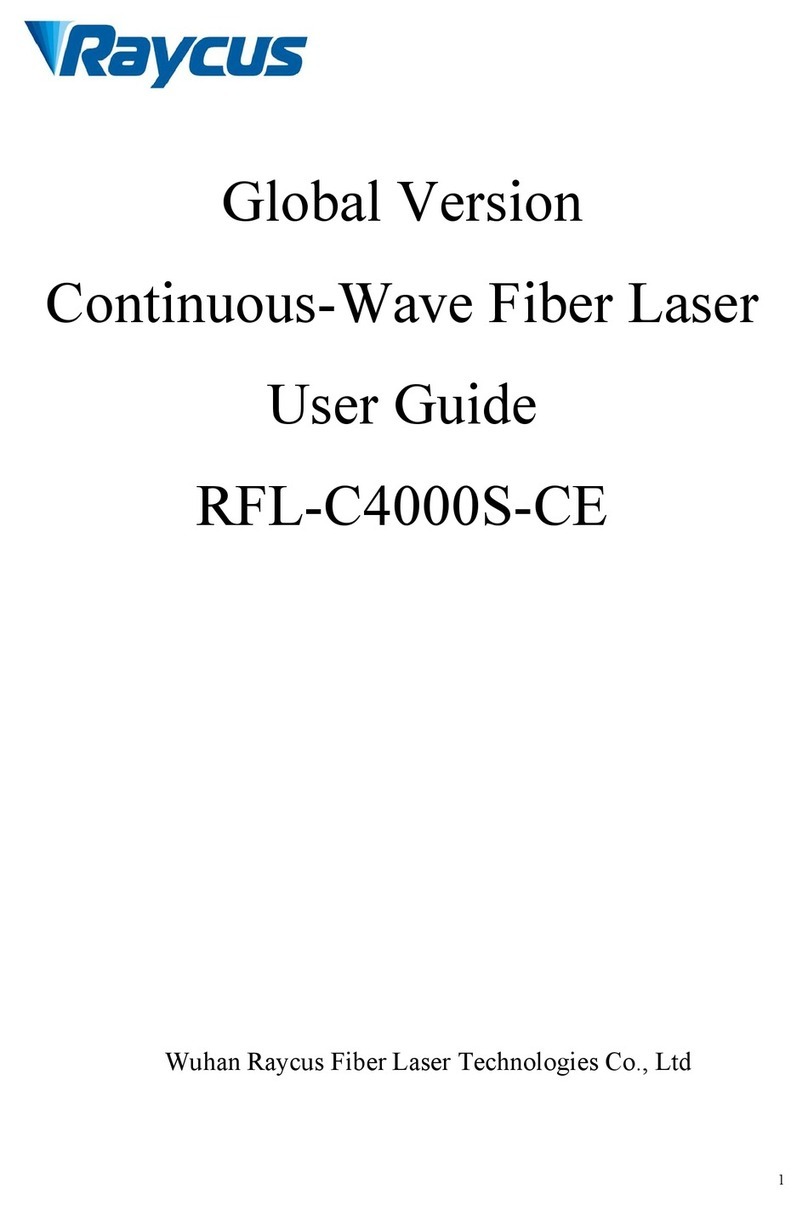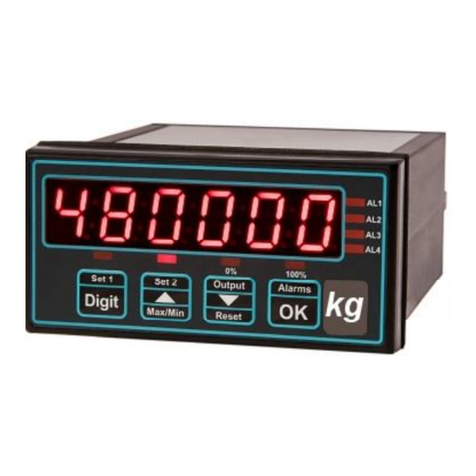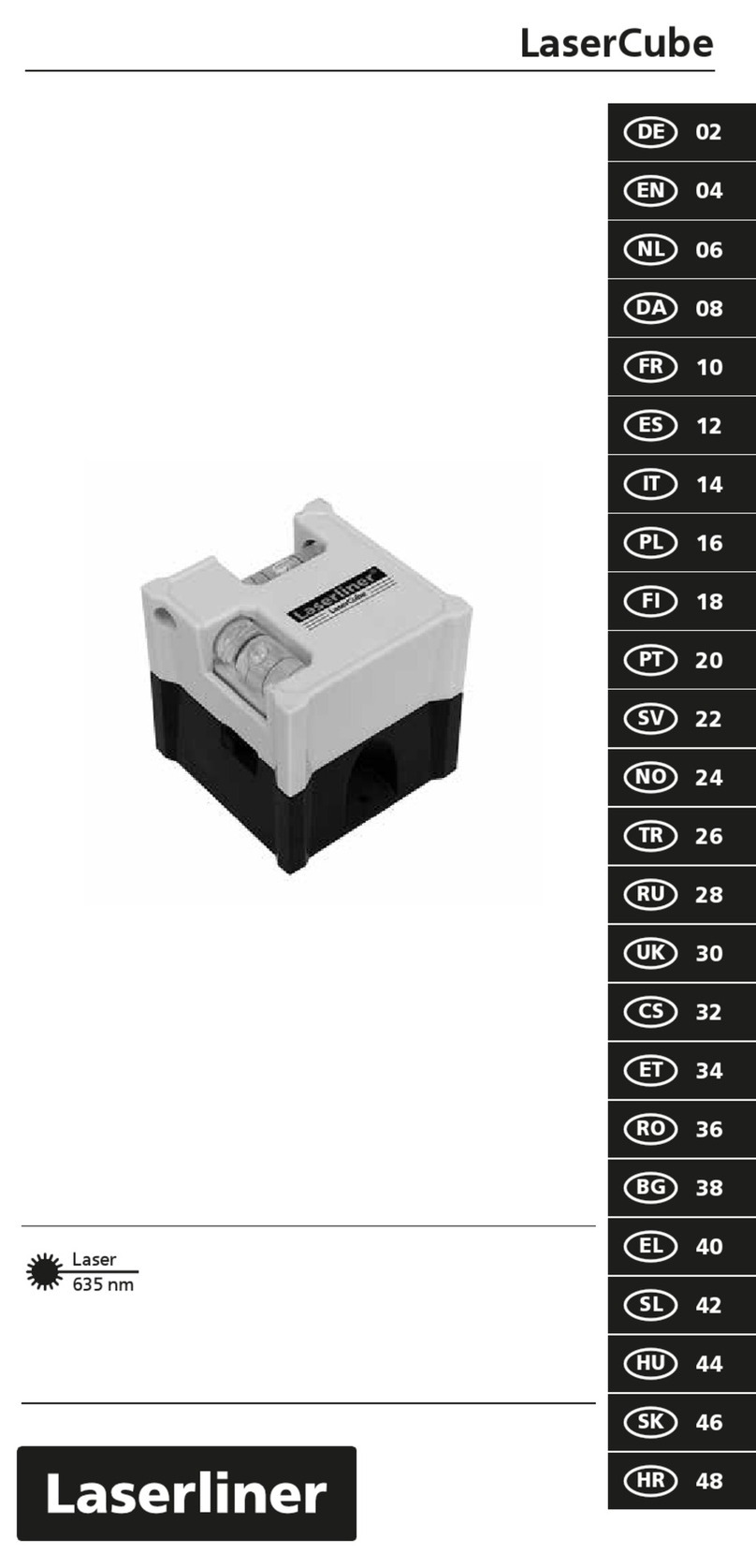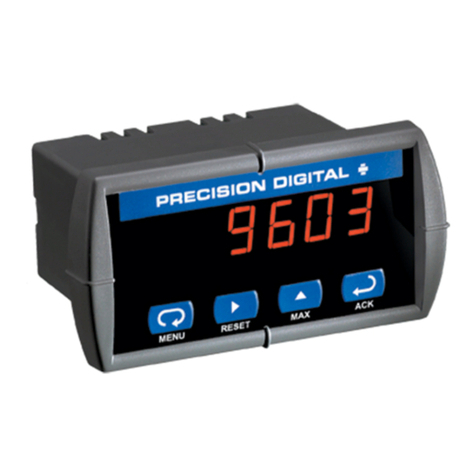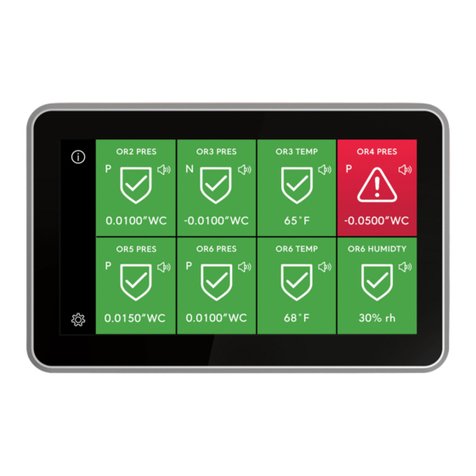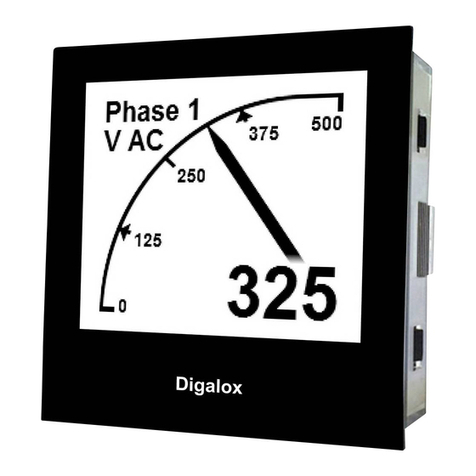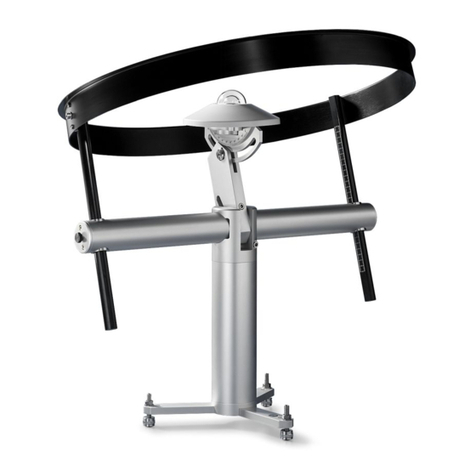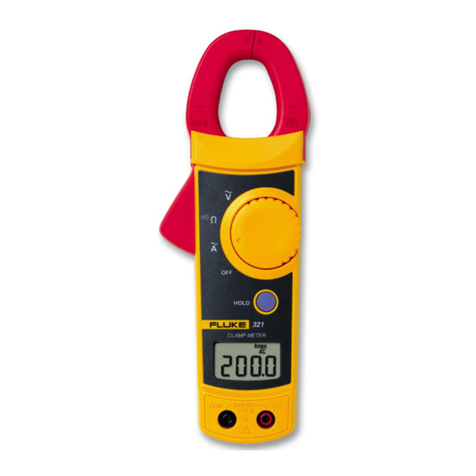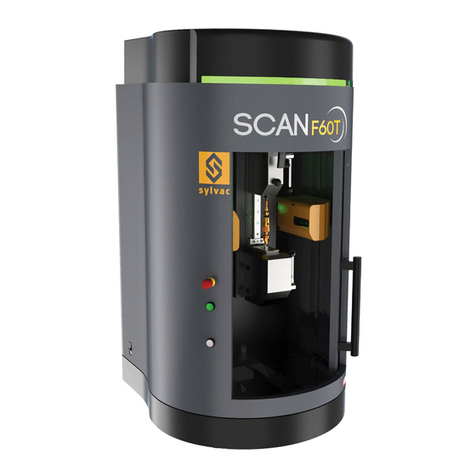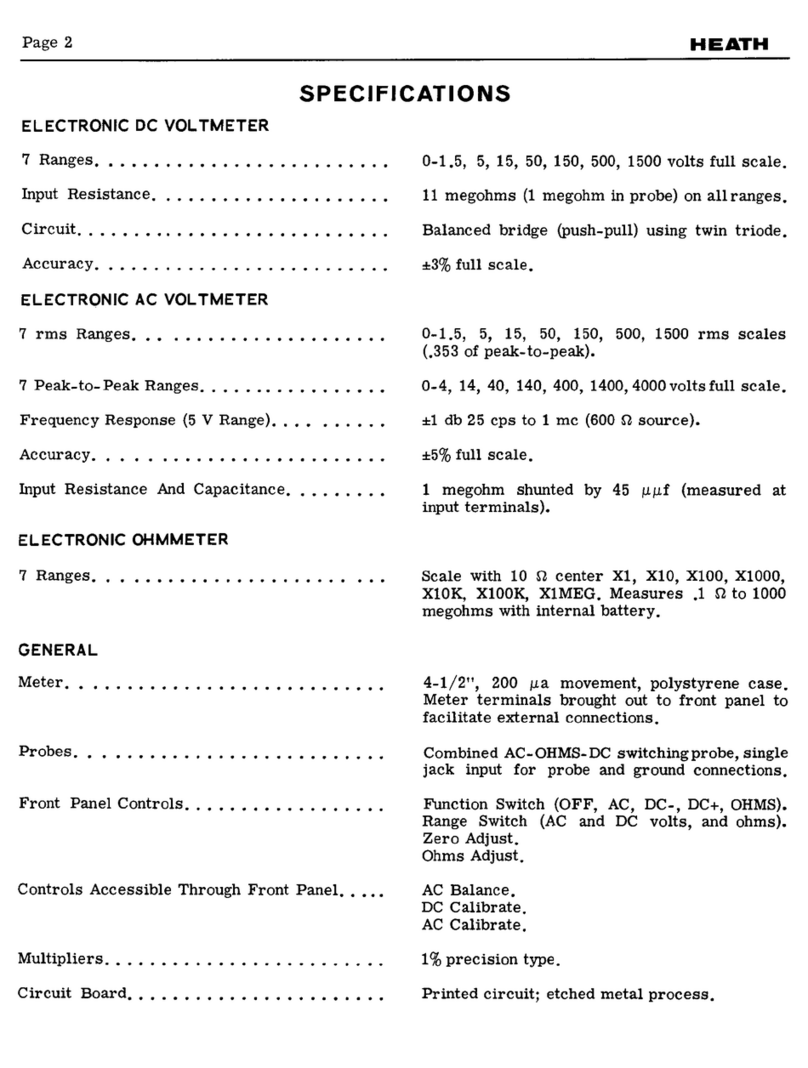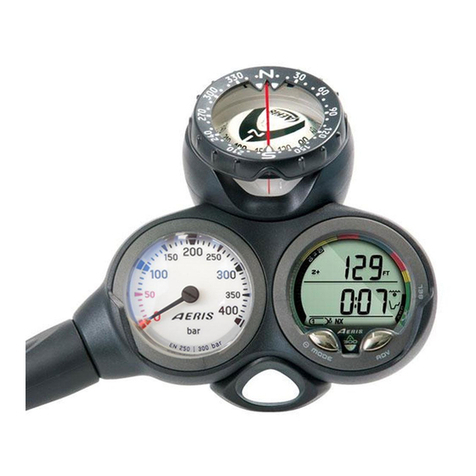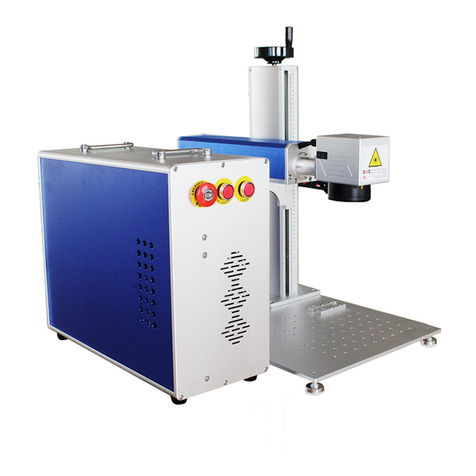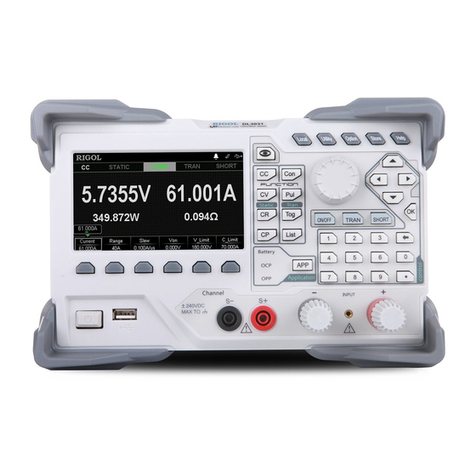Seres OL TOC Operating instructions

This document is the property of SERES and cannot be reproduced without authorization
User and Maintenance
Manual
TOC
Online analyzer
for TOC monitoring
in water
N°10844_revS

TOC EVOLUTION:
USER &
MAINTENANCE MANUAL
Page: 2/74
Instructions No.: 10844
This document is the property of SERES and cannot be reproduced without authorization
1 LIST OF VERSIONS AND APPROVALS
Version
Purpose for update
Issued by:
Approved by:
Date
A
Creation of the document
DALIA Nicolas
GOZZI Marc
02/2016
B
UPDATE Technician / Business Corrections
DALIA Nicolas
GOZZI Marc
03/2016
C
UPDATE electric precaution
DALIA Nicolas
GOZZI Marc
11/2016
D
UPDATE range 0-10mg/l
DALIA Nicolas
GOZZI Marc
12/2016
E
UPDATE Plans with silicagel cartridge
(option)
DALIA Nicolas
GOZZI Marc
01/2017
F
UPDATE Acid for range 1000mg/l
DALIA Nicolas
GOZZI Marc
04/2017
G
UPDATE JBUS by RS485 or TCP/IP
DALIA Nicolas
GOZZI Marc
06/2017
H
UPDATE of the Soda lime and activated
carbon cartridges removal procedure (part
11.2.10)
BOUTRELLE
Julien
GOZZI Marc
08/2017
I
Without Persulfate deleted
DALIA Nicolas
GOZZI Marc
09/2017
J
UPDATE Drawing
DALIA Nicolas
GOZZI Marc
11/2017
K
UPDATE Internal dilution mode
DALIA Nicolas
GOZZI Marc
11/2017
L
UPDATE Periodic maintenance cycle -
JBUSS
DALIA Nicolas
LOFASO Jérémy
04/2018
M
UPDATE Copper cartridge + Drawings
CARIS Loïc
LOFASO Jérémy
09/2018
N
UPDATE SERES OL –Spares parts
DALIA Nicolas
QHSE Department
06/2020
O
UPDATE TCP/IP communication
international symbols _ Multi-channel
RACOT Célia
DALIA Nicolas
07/2020
P
List spare parts deleted
DALIA Nicolas
DALIA Nicolas
08/2020
Q
Removal of items not present in the new
SERES OL catalog at the SWAN takeover:
dilution range, …
DALIA Nicolas
DALIA Nicolas
10/2020
R
Update ISO certificate + Zero cycle
DALIA Nicolas
DALIA Nicolas
02/2021
S
Update CE/UKCA Declaration
LENOBLE Laure
DALIA Nicolas
08/2021

TOC EVOLUTION:
USER &
MAINTENANCE MANUAL
Page: 3/74
Instructions No.: 10844
This document is the property of SERES and cannot be reproduced without authorization
2 CONTENTS
1LIST OF VERSIONS AND APPROVALS ___________________________________________________________ 2
2CONTENTS____________________________________________________________________________________ 3
3WARRANTY CONDITIONS______________________________________________________________________ 6
3.1. REMINDER OF THE MAIN WARRANTIES CONDITIONS APPLICABLE TO THE ANALYSER __________________________ 6
3.2.1. Safety Regulations___________________________________________________________________________________6
3.2.2. Analyser’s characteristics_____________________________________________________________________________6
3.2.3. Environmental conditions _____________________________________________________________________________6
3.2. INTERNATIONAL SYMBOLS RECOGNISED BY MANUFACTURER___________________________________________ 7
3.4. AFTER SALE SERVICE CONTACT___________________________________________________________________ 7
3.5. INFORMATION ON THE COMPANY __________________________________________________________________ 7
3.6. THE BOOK____________________________________________________________________________________ 8
3.7. ACCESS CODES ________________________________________________________________________________ 8
3.7.1. Description_________________________________________________________________________________________8
3.7.2. Your access codes____________________________________________________________________________________8
4UNPACKING BOOK ____________________________________________________________________________ 9
4.1 PRECAUTION ________________________________________________________________________________ 9
5INTRODUCTION ______________________________________________________________________________ 11
6MEASURING PRINCIPLE ______________________________________________________________________ 12
6.1 PREPARATION OF THE SAMPLE__________________________________________________________________ 12
6.1.1 Sampling _________________________________________________________________________________________12
6.1.2 Removal of mineral carbon __________________________________________________________________________12
6.2 OXIDATION OF ORGANIC MATTER _______________________________________________________________ 12
6.3 CO2MEASUREMENT _________________________________________________________________________ 13
6.4 APPLICATION _______________________________________________________________________________ 13
6.5 REAGENTS _________________________________________________________________________________ 13
6.5.1 Mode: 0-2ppm and 0-10ppm _________________________________________________________________________13
6.5.2 Mode: 0-100ppm___________________________________________________________________________________13
6.6 CHARACTERISTICS OF THE MEASURING METHOD ____________________________________________________ 14
6.7 CALIBRATION AND TESTING____________________________________________________________________ 15
6.8 MEASURING CYCLE __________________________________________________________________________ 16
6.9 HYDRAULIC DIAGRAMS _______________________________________________________________________ 17
7TECHNICAL SPECIFICATIONS ________________________________________________________________ 19
7.1 THE ENVIRONMENT __________________________________________________________________________ 19
7.2 CHARACTERISTICS___________________________________________________________________________ 19
7.2.1 Measuring ranges __________________________________________________________________________________19
7.2.2 Measuring rate ____________________________________________________________________________________19
7.2.3 Standard dimensions________________________________________________________________________________19
7.2.4 Electrical characteristics ____________________________________________________________________________19
7.2.5 Sample inlet_______________________________________________________________________________________19
7.2.6 Sample outlet______________________________________________________________________________________20
7.2.7 Instrument air inlet_________________________________________________________________________________20
7.2.8 Electrical connections_______________________________________________________________________________20
7.2.9 Display & Recording _______________________________________________________________________________20
7.2.10 Consumption (average range 50mg/l) __________________________________________________________________20
8DESCRIPTION OF THE EQUIPMENT ___________________________________________________________ 21
8.1 DESCRIPTION OF THE ANALYSER ________________________________________________________________ 21
8.2 DESCRIPTION OF THE SUB-ASSEMBLIES ___________________________________________________________ 24
8.2.1 Collection of the sample volume_______________________________________________________________________24
8.2.2 The fast loop (1 channel) ____________________________________________________________________________24

TOC EVOLUTION:
USER &
MAINTENANCE MANUAL
Page: 4/74
Instructions No.: 10844
This document is the property of SERES and cannot be reproduced without authorization
8.2.3 The multi-channel block (multi-channel configuration)____________________________________________________24
8.2.4 The multi-function reactor (oxidation) _________________________________________________________________25
8.2.5 The Condenser ____________________________________________________________________________________25
8.2.6 The measuring cell (NDIR) __________________________________________________________________________25
8.2.7 The Liquid Seal (Sample Overflow and Pressure Drop Security)____________________________________________26
8.2.8 The pumps________________________________________________________________________________________26
8.2.9 Air flow rate control________________________________________________________________________________26
8.2.10 Carbon treatment cartridge__________________________________________________________________________27
8.2.11 Chlorine treatment cartridge (depend upon application) __________________________________________________27
8.2.12 The compressor____________________________________________________________________________________28
8.2.13 The power supply __________________________________________________________________________________28
8.2.14 The touch screen (PLC board or MMI) ________________________________________________________________28
8.2.15 The Measuring Board_______________________________________________________________________________29
8.2.16 The Input/Output Board ____________________________________________________________________________30
8.3 DESCRIPTION OF THE SCREEN MENUS ____________________________________________________________ 34
8.3.1 Description of the Main screen _______________________________________________________________________34
8.3.2 Measurement Menu (Measurement data, thresholds, coefficient, etc.)________________________________________36
8.3.3 Tools menu _______________________________________________________________________________________36
9INSTALLATION MANUAL _____________________________________________________________________ 42
9.1 LOCATION _________________________________________________________________________________ 42
9.2 MOUNTING CONDITIONS ______________________________________________________________________ 42
9.3 ELECTRICAL CONNECTIONS ____________________________________________________________________ 42
9.3.1 Power supply______________________________________________________________________________________42
9.3.2 Communication____________________________________________________________________________________44
9.3.3 JBUS connection (RS485) ___________________________________________________________________________46
9.4 HYDRAULIC CONNECTIONS ____________________________________________________________________ 48
9.4.1 Sample to be analysed_______________________________________________________________________________48
9.4.2 Standard for calibrating the analyser __________________________________________________________________48
9.4.3 Compressed air ____________________________________________________________________________________48
10 USER MANUAL _______________________________________________________________________________ 50
10.1 PRELIMINARY START-UP ______________________________________________________________________ 50
10.2 SETTING UP THE REAGENTS ____________________________________________________________________ 50
10.3 LAUNCHING OF THE ANALYSER _________________________________________________________________ 50
10.4 PUMP PRIMING______________________________________________________________________________ 51
10.5 SETTING THE MEASUREMENT THRESHOLD PARAMETERS ______________________________________________ 51
10.6 SETTING THE PARAMETERS OF THE 4-20 MARANGE _________________________________________________ 52
10.7 TIMING OF SAMPLE PURGING LINE (OPTION ON SPECIFIC CUSTOMER REQUEST) _____________________________ 53
10.8 LAUNCH OF THE CONTINUOUS CYCLES____________________________________________________________ 53
10.9 VISUALISATION AND RECOVERY OF THE DATA______________________________________________________ 53
10.10 STOPPING THE ANALYSER ___________________________________________________________________ 54
11 MAINTENANCE MANUAL _____________________________________________________________________ 56
11.1 PREVENTIVE MAINTENANCE ___________________________________________________________________ 56
11.2 REGULAR MAINTENANCE______________________________________________________________________ 56
11.2.1 TOC calibration ___________________________________________________________________________________56
11.2.2 Manual measure TOC ______________________________________________________________________________58
11.2.3 Zero calibration TOC (only if activated by SERES) ______________________________________________________59
11.2.4 Maintenance cycle –Periodic trigger (option) ___________________________________________________________59
11.2.5 Reagent change____________________________________________________________________________________60
11.2.6 Replacing the pump pipes ___________________________________________________________________________60
11.2.7 Soda lime and activated carbon cartridges______________________________________________________________63
11.2.8 Copper cartridge (depend upon application) ____________________________________________________________64
11.2.9 Solenoid valves (Air and Water) ______________________________________________________________________65
11.2.10 Compressor and Desiccant cartridge___________________________________________________________________65
11.2.11 Capillary columns__________________________________________________________________________________65
11.3 SPECIFIC MAINTENANCE __________________________________________________________________ 65
11.3.1 Replacing the touch screen___________________________________________________________________________65
11.3.2 Replacing the measuring board_______________________________________________________________________66
11.3.3 Replacing the input/output board _____________________________________________________________________66
11.3.4 Replacing a pump __________________________________________________________________________________66
11.3.5 The reactor _______________________________________________________________________________________67
11.3.6 The NDIR ________________________________________________________________________________________67

TOC EVOLUTION:
USER &
MAINTENANCE MANUAL
Page: 5/74
Instructions No.: 10844
This document is the property of SERES and cannot be reproduced without authorization
11.3.7 The Condenser ____________________________________________________________________________________68
11.3.8 Replacing the heated down conductor__________________________________________________________________69
11.3.9 Replacing the mass controller ________________________________________________________________________70
11.3.10 Replacing the Air filter______________________________________________________________________________71
12 REPAIR MANUAL_____________________________________________________________________________ 72
12.1 FAILURE DIAGNOSIS__________________________________________________________________________ 72
13 ANNEXS______________________________________________________________________________________ 74

TOC EVOLUTION:
USER &
MAINTENANCE MANUAL
Page: 6/74
Instructions No.: 10844
This document is the property of SERES and cannot be reproduced without authorization
3 Warranty conditions
3.1. Reminder of the main warranties conditions applicable to the analyser
Our general terms of warranty are applied to this analyser and integrated in our general terms of sale
downloadable on our website.
One year warranty (Spare parts and workshop service) within the framework of normal conditions of
operation and maintenance specified in this book.
Normal operation conditions. Only follow-up of the rules of reagents preparation supplied by
MANUFACTURER Environment guarantees the analyzer’s good operation. In case of non-
observance of the rules of reagents preparation Manufacturer reserves the right to refuse the one-year
manufacturer warranty for the supplied apparatus.
3.2. Security instructions
3.2.1. Safety Regulations
To avoid injury to persons caused by electricity, please respect all the safety regulations of this book.
The equipment should to be used exclusively with a ground plug.
If the equipment is used in a way not specified by the manufacturer, the protection provided with the
equipment can be affected.
Any spare part has to be replaced exclusively by a qualified person using only the parts specified by the
manufacturer. It is always recommended that all power supplies are switched off before dismounting or
replacement of any component.
For any intervention on the hydraulic part of the analyser, wear adapted protections (protective clothing,
gloves, and glasses).
Please, do not use this equipment if there is flammable liquids or vapours, this could represent a risk for
security.
Use UV protective glasses for each intervention on the analyzer or if the lamp is on.
3.2.2. Analyser’s characteristics
240V AC (110VAC on request)
50/60hz
All wirings have be in accordance with local standards and realised by a skilled and authorized electricians.
The equipment must be connected downstream of a secure electrical installation.
All wirings and connections (electrical, hydraulic …) should be done according to local regulations of the
country in force and only by qualified authorized and skilled personal. The equipment warranty won’t be
guaranteed by the manufacturer in case of no observance of the standards and regulations reported in points 8
and hereafter in this book.
3.2.3. Environmental conditions
Relative humidity
5% to 95% (without condensation)
Temperature
5 to 40 C
Pollution level
2
Installation category
II
Maximum altitude
2000m.

TOC EVOLUTION:
USER &
MAINTENANCE MANUAL
Page: 7/74
Instructions No.: 10844
This document is the property of SERES and cannot be reproduced without authorization
3.2. International symbols recognised by Manufacturer
3.3.
Symbol
Standard
Description
IEC 60417, No. 5016
Electrical fuse
IEC 60417, No. 5017
Ground
IEC 60417, No. 5021
Equipotentiality
IEC 60417, No. 5032
Alternative current
IEC 60417, No. 5041
Be careful, hot surface
ISO 3864, No. B.3.1
Be careful, see documents
ISO 3864, No. B.3.6
Be careful, electrical hazard
IEC 60417, No. 6040
Ultraviolet radiation,
instructional safeguard
3.4. After Sale Service Contact
Technical support: Caris Loic, Tel: 04.42.97.37.27, loic.caris@seres-ol.com
NB: To avoid errors, when ordering spare parts or service attendance please specify the serial number of the
analyser if possible.
3.5. Information on the company
SERES OL
219 Avenue de Provence
13730 SAINT VICTORET
FRANCE
Tel: +33 (0)4 42.97.37.37
Fax: + 33 (0)4 42.97.30.30
Web: www.seres-ol.com
SIRET : 85323753500028
NAF 2651B
TVA Intracommunautaire FR84853237535

TOC EVOLUTION:
USER &
MAINTENANCE MANUAL
Page: 8/74
Instructions No.: 10844
This document is the property of SERES and cannot be reproduced without authorization
3.6. The book
The information contained in this book may be subject of any changes without notice beforehand and don’t
represent any engagement on behalf of Manufacturer. Manufacturer reserves the right to make changes in the
construction, design, specifications, and / or in the procedures that cannot be reflected in the book.
This book is supplied under the condition that the provided information will not be used to the detriment of
Manufacturer.
3.7. Access codes
3.7.1. Description
Some menus have a limited access. There are two access levels:
User access. Possible Actions: Consulting the main window data.
User with authorization access (or User W). Possible Actions: Consulting the measure in process, Stop of
the measure in process, access to the settings menu (Thresholds, Setting 4-20mA outputs ...).
Once the access code is entered, if there is no action within 5 minutes, the code will be asked again automatically.
If the code is unknown, press Cancel and the main page will appear automatically.
3.7.2. Your access codes
Some menus have a limited access. There are two access levels:
User access
oPossible actions: Consulting the main window datas.
User access with authorization (or User W).
oPossible Actions: Consulting the measure in process, Stop of the measure in process, access to the
settings menu (Thresholds, Setting 4-20mA outputs ...).
oUser with authorization access CODE: 0712
Once the access code is entered, if there is no action within 5 minutes, the code will be asked again automatically.
If the code is unknown, press Cancel and the main page will appear automatically.
THE PAGE IS TO BE CUT AND KEPT IMPERATIVELY

TOC EVOLUTION:
USER &
MAINTENANCE MANUAL
Page: 9/74
Instructions No.: 10844
This document is the property of SERES and cannot be reproduced without authorization
4 Unpacking book
4.1 Precaution
Position the box corectly (Up/Down)
Unpack carefully the analyser
Check the analyzer for damage
oIf the device seems to be damaged, don’t plug it and get into touch with the After Sale Service
Department immediately (contact in Chapter Warranty).

TOC EVOLUTION:
USER &
MAINTENANCE MANUAL
Page: 10/74
Instructions No.: 10844
This document is the property of SERES and cannot be reproduced without authorization
SECTION 1
EQUIPMENT FILE
5. INTRODUCTION
6. MEASURING PRINCIPLE
7. TECHNICAL SPECIFICATIONS
8. DESCRIPTION OF THE EQUIPMENT

TOC EVOLUTION:
USER &
MAINTENANCE MANUAL
Page: 11/74
Instructions No.: 10844
This document is the property of SERES and cannot be reproduced without authorization
TIC
Total Inorganic
Carbon
NPOC
Non Purgeable
Organic Carbon
Inlet
Sample
TOC=NPOC if VOC = 0
Standard
measurement
5 Introduction
Water generally contains carbon of mineral or organic origin, which is either dissolved or
suspended. The parameter, which is measured in most cases, is the total organic carbon in a sample. The
presence of carbon as suspended volatile organic compounds and mineral compounds cannot be ignored
and the TOC analysis often requires determining each of these forms.
TOC
The TOC EVOLUTION analyser from SERES is designed for determining these different carbonated
compounds:
-Non Purgeable Organic Carbon (NPOC/TOC)
-Total Inorganic Carbon (TIC) - (Option)
COD correlation
In addition, we have the "COD Correlation" configuration possible.
By measuring TOC we can deduce the oxygen demand (COD) of the sample analyzed.
Indeed a linear correlation coefficient can be applied* between the TOC and the COD of the form:
COD = A * TOC + B
With A = COD correlation coefficient
B = Offset COD
*This correlation is only valid if the customer process is stable and the customer has been able to
determine the correlation equation. This equation must be communicated to SERES when ordering the
analyzer.

TOC EVOLUTION:
USER &
MAINTENANCE MANUAL
Page: 12/74
Instructions No.: 10844
This document is the property of SERES and cannot be reproduced without authorization
6 Measuring principle
The measurement of organic carbon, based on the cold oxidation principle, can be represented
as follows:
- Preparation of the sample
- Oxidation of organic matter
- Measurement of resulting CO2
6.1 Preparation of the sample
6.1.1 Sampling
The analyser is to be supplied automatically:
- By pumping into a tank, whose system will have been manufactured by the client in a suitable
manner (surface sampling type - for an uncharged sample in general),
- either from a fast loop, if a pressurised pipework has been provided (optional - uncharged / weakly
charged sample),
- or from an anti-clogging device, if the sample to be tested is collected in a pond or gutter,
(optional) – the charged sample.
For this last version, please consult us.
The sample collection/treatment system is used to store up to 100 µm of particles. A crusher is
added is necessary.
The sample and filter line is cleaned either by using the “Black Cleaning” technique (counter-current
cleaning), or with compressed air, on a case-by-case basis.
6.1.2 Removal of mineral carbon
The sample introduced into the analyser is acidified with sulphuric acid (or other acids according to
the configuration) in order to transform the mineral carbon into CO2. The stripping process is carried out
in hot conditions, which reduces the acid consumption (~ 1.5L/month) and accelerates the speed of
transformation into CO2.
The gas is then evacuated into the atmosphere or can be measured and displayed.
6.2 Oxidation of organic matter
For this operation, in order to achieve an efficiency equalling that of the combustion technique (800-
900°C), which nears 100%, we have implemented a UV source with a high radiating power inside a
reactor.
The sample is injected into the reactor when hot. The UV directly oxides the organic matter, which
transforms into CO2. Furthermore, the temperature inside the reactor increases in the presence of these
very powerful UVs and favours the oxidation.
A significantly reduced amount of oxidising reagent (~3L/month) is added in order to further reduce
the analysis time.

TOC EVOLUTION:
USER &
MAINTENANCE MANUAL
Page: 13/74
Instructions No.: 10844
This document is the property of SERES and cannot be reproduced without authorization
6.3 CO2measurement
The measurement is based on the absorption of an infrared radiation by the CO2molecule.
The measuring vessel is temperature-controlled.
It is an NDIR measuring system (NDIR: Non Dispersive IR) operating with a “mass detector”.
6.4 Application
- Industrial process waters: testing all types of processes, water treatment plants, waste water, etc.
significantly loaded with many different chemical compounds, generally related to oxidation difficulties
and to the potential presence of suspended organic matter.
- Natural waters: source, river, drinking water, etc. (0.2 to 50 mg/l); presence of humic acid, possible
presence of suspended organic matter.
- Pure waters: “Utilities” and industrial sites (0.1 to 5/10 mg/l):
– Production of demineralised water for general and chemical uses.
– Condensate waters from vapour production systems (Medium Pressure or Very High Pressure
systems) in thermal and nuclear power plants…refining, petrochemistry.
6.5 Reagents
6.5.1 Mode: 0-2ppm and 0-10ppm
*These amounts as well as the reagents can vary according to the configuration set up on a given
client configuration.
6.5.2 Mode: 0-100ppm
*These amounts as well as the reagents can vary according to the configuration set up on a given
client configuration.
Name
Reference
Validity limit
and Storage
conditions
Toxicity
Ref: Pump pipes
Works
MTE
Monthly
consumption
H2SO42N
R0x159
2 years
Corrosive
Ø0.8mm
3 months
1.5L*
Sodium
Peroxodisulfate
250g/l
R0x208G
250
2 month
Corrosive
Ø0.8mm
3 months
1.5L*
Name
Reference
Validity limit
and Storage
conditions
Toxicity
Ref: Pump pipes
Works
MTE
Monthly
consumption
H2SO42N
R0x159
2 years
Corrosive
Ø0.8mm
3 months
1.5L*
Sodium
Peroxodisulfate
250g/l
R0x208G
250
2 month
Corrosive
Ø0.8mm
3 months
3L*

TOC EVOLUTION:
USER &
MAINTENANCE MANUAL
Page: 14/74
Instructions No.: 10844
This document is the property of SERES and cannot be reproduced without authorization
6.6 Characteristics of the measuring method
The characteristic values of the method are expressed as a percentage on Full scale.
Measuring system
NDIR
Measuring range
Low-range configuration 0-2 ppm
Limit of Detection 0.01 ppm
Repeatability ± 2 % FS
Accuracy ± 3 % FS
Mid-range configuration 0-10 ppm
Limit of Detection 0.1 ppm
Repeatability ± 2 % FS
Accuracy ± 3 % FS
High-range configuration 0-100 ppm
Limit of Detection 0.5 ppm
Repeatability ± 2.5 % FS
Accuracy ± 3 % FS

TOC EVOLUTION:
USER &
MAINTENANCE MANUAL
Page: 15/74
Instructions No.: 10844
This document is the property of SERES and cannot be reproduced without authorization
6.7 Calibration and Testing
The analyser can include 4 maintenance cycles.
Step No.
Cycles
Objective
Following step
Step 1
Manual Measure on
TOC standard (Phtalate)
Analysis of the oxidation
yield –Grab sample
If faulty, switch to step 2
or 3
Step 2*
Manual measure on TIC
(Sodium Carbonate)
(Not mandatory)
Grab sample
If the operation is correct,
switch to step 3
Step 3**
Zero measure (DIW)
Offset calculation on DIW
If the operation is correct,
switch to step 4
Step 4
Calibration on TOC
(Phtalate)
Calibration on TOC
End
*Step 2 may not be implemented in the device depending on the configuration.
** Only for ranges <20ppm.
The “Manual measure on TIC” and “Zero measure” may not be present on the analyser
according to the situation. If this is the case, only use the “TOC Calibration” and “Manual Measure
TOC”
Zero measure*
TOC calibration
Manual Measure TOC
Manual Measure
TIC*
Standard
Deionized Water
See value on test
certificate
Middle of range / Client
standard
Middle of range
Recommended
frequency
Once per month and
During each reagent
time
Once per month and
During each reagent
time
Once per month and
During each reagent
time
(If a failure occurs)
Duration
6-10 min
6-10 min
6-10 min
6-10 min
The calibration method is described in section 11.2.1 Maintenance Manual / Regular Maintenance /
Calibration.

TOC EVOLUTION:
USER &
MAINTENANCE MANUAL
Page: 16/74
Instructions No.: 10844
This document is the property of SERES and cannot be reproduced without authorization
TOC standards
In order to obtain a solution of 1 g/l:
- Dissolve 2.125 g of potassium hydrogen phtalate
- Adjust to 1,000 ml.
TIC control solution (optional)
6.8 Measuring cycle
The measuring cycle is included in a 5 to 10 min interval but it also depends on
the type of sample, used program (derivative function) and on the parameters being measured.
Name
Reference
Validity limit and
Storage
conditions
Toxicity
Monthly
consumption
C8H5KO4
Potassium hydrogen
phtalate
R01130MG50
1 week in a cool
place
/
300ml
Name
Reference
Validity limit and
Storage conditions
Toxicity
Monthly consumption
Na2CO3(Sodium
carbonate) – NaHCO3
(Sodium hydrogen
carbonate)
R01275MG50
1 week in a cool
place
/
300ml

TOC EVOLUTION:
USER &
MAINTENANCE MANUAL
Page: 17/74
Instructions No.: 10844
This document is the property of SERES and cannot be reproduced without authorization
6.9 Hydraulic diagrams
Figure 1: Hydraulic diagram 1 channel.

TOC EVOLUTION:
USER &
MAINTENANCE MANUAL
Page: 18/74
Instructions No.: 10844
This document is the property of SERES and cannot be reproduced without authorization
Figure 2: Multi Channel Hydraulic diagram.

TOC EVOLUTION:
USER &
MAINTENANCE MANUAL
Page: 19/74
Instructions No.: 10844
This document is the property of SERES and cannot be reproduced without authorization
7 Technical specifications
7.1 The environment
Recommendations for the facility:
Room temperature between 5 and 40°C maximum
7.2 Characteristics
7.2.1 Measuring ranges
3 measuring ranges are available in two versions:
- Range 1: Dynamic ranges 0-2 ppm (Dual channel configuration possible)
- Range 2: Dynamic ranges 0-10 ppm (Dual channel configuration possible)
- Range 3: Dynamic ranges 0-100 ppm (Dual channel configuration possible)
7.2.2 Measuring rate
5 to 10 min according to the range but it also depends on the nature of the sample and on the type of
measurement.
The spacing between the measurements can be adjusted.
7.2.3 Standard dimensions
Casing: l x h x d: 993x600x422 mm
Volume: 0.25m3
Weight: 80kg
Protection: IP55
If there are additional options, please consult the specific dimensional drawing.
7.2.4 Electrical characteristics
Consumption: 300 VA maximum
Input supply: 240 V, 50/60 Hz or 110V (configuration)
7.2.5 Sample inlet
Temperature: min: 5°C max: 50°C
Clean - weakly charged sample:
Flow rate: 50 l/h (if the fast sampling loop option is available)
Pressure: Room pressure (in a tank) - 3 bars maximum if a fast sampling loop is available
Charged sample:
Sampling & Treatment: Particles stored up to 100μm (please consult us) – Flowrate for
Sampling/treatment system (100 to 500l/h – 1bar)

TOC EVOLUTION:
USER &
MAINTENANCE MANUAL
Page: 20/74
Instructions No.: 10844
This document is the property of SERES and cannot be reproduced without authorization
7.2.6 Sample outlet
Free outlet, not closed (atmospheric pressure)
7.2.7 Instrument air inlet
For the measurement:
Pressure: 3 bar maximum – Adjustment at 0.5-1bar
Type of air: No humidity (dry air)
NDIR outlet gas evacuation: The gas shall be evacuated into free outside air
For Cleaning the Sample Collecting/Treatment System
Pressure: 7 bar maximum – Adjustment at 2.5 bar (pressure reducer)
7.2.8 Electrical connections
Input / output signals:
Standard output signals: 4-20 mA and dry contacts
Input signals: (optional)
JBUS via RS485 or TCP/IP (optional)
7.2.9 Display & Recording
-Touch screen
-Possible measuring graphs
-Alarm menu
-Recovery of measurements via a USB port (2 months of storage)
7.2.10 Consumption (average range 50mg/l)
Reagents: Between 1.5L and 3L /month (Depends on the application)
Table of contents
Other Seres OL Measuring Instrument manuals






